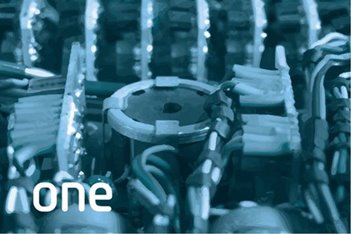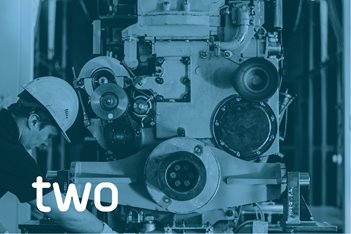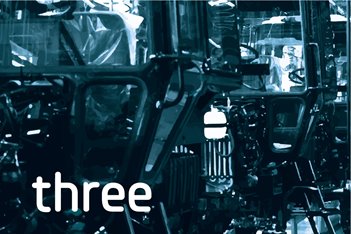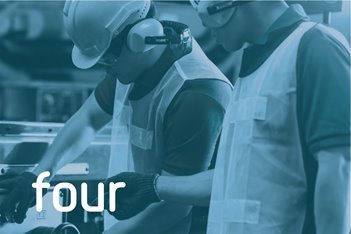Going green may have been a fad in the past, but Environmental, Social and Corporate Governance (ESG) goals are being added to company initiatives across all industries – including heavy equipment. And, with more and more of your customers incorporating ESG initiatives as well, having electrified heavy equipment vehicles in your offering is more important than ever. The switch away from diesel-powered engines might seem like a difficult path, but we’ve pooled our experience helping companies like yours bring these products to market to provide guidance on the electrification journey.
When working through product launch considerations, make sure these four opportunities are accounted for in your strategy:
- Vetted suppliers that support electrified heavy equipment component development and manufacturing
- A well-planned product development and testing process
- A flexible product launch approach for your electrified heavy equipment components
- An aftermarket service plan
So, as you’re designing a new product, a great place to start mitigating risk is by looking at your suppliers because they can make or break your progress.
1. Vetted suppliers that support electrified heavy equipment component development and manufacturing
 While relationships with existing mechanical suppliers may go back dozens of years, there are shifts that need to occur in your supply chain approach for electrified equipment. For example, there are multiple mechanical component suppliers that you can turn to and get the parts you need. But, when it comes to the highly-technical electrical components needed for electrified equipment, there may only have one or two options. To help create a smooth process, identify and connect with suppliers very early in the process. This ensures understanding of their technical ability to provide the components you need and the ability to deliver them at the quality levels and production volumes required.
While relationships with existing mechanical suppliers may go back dozens of years, there are shifts that need to occur in your supply chain approach for electrified equipment. For example, there are multiple mechanical component suppliers that you can turn to and get the parts you need. But, when it comes to the highly-technical electrical components needed for electrified equipment, there may only have one or two options. To help create a smooth process, identify and connect with suppliers very early in the process. This ensures understanding of their technical ability to provide the components you need and the ability to deliver them at the quality levels and production volumes required.
A partner with electronic sourcing expertise is a great option to ease the burden on the process. If they also have experience in contract manufacturing, the partner can leverage that knowledge to assess risk across the full supply chain and will know the nuances of this specific technology.
2. A well-planned new product development and testing process
 When developing a new product, testing is inevitably part of the process, especially when updating a product with well-established operating parameters. But when it comes to building a product for test, the move to electrical equipment brings in special considerations and a longer product development cycle. For instance, in a mechanical-based engine, the longest lead times are often for the raw materials needed to build parts – and that still means your lead time is a matter of weeks. In an electromechanical-based engine, the parts required are highly engineered and, in some cases, can take upwards of one year to get.
When developing a new product, testing is inevitably part of the process, especially when updating a product with well-established operating parameters. But when it comes to building a product for test, the move to electrical equipment brings in special considerations and a longer product development cycle. For instance, in a mechanical-based engine, the longest lead times are often for the raw materials needed to build parts – and that still means your lead time is a matter of weeks. In an electromechanical-based engine, the parts required are highly engineered and, in some cases, can take upwards of one year to get.
When all the pieces come together, there are added considerations that go into testing for production and end-use. One area that brings a host of new testing criteria is the dramatically higher voltages and power levels required for electric drive components. This not only changes the testing equipment and parameters significantly, but adds more safety considerations that not all OEMs are prepared to manage.
To help with these situations, outside partners that have experience in the design of these electromechanical parts are a great resource. By engaging with them from the beginning of your electrified heavy equipment product development process, these partners can help you manage the long timelines and give insights into how processes should move to stay efficient. And while some partners can help with testing, not all have the equipment and industry knowledge needed to develop, deploy and conduct the tests safely and reliably.
3. A flexible product launch approach for your electrified heavy equipment components
 The switch to electric-powered heavy equipment can eliminate a lot of the historical context derived from your mechanical product offering. Everything from cost points to production volumes needs to be assessed, and it can be tempting to be very conservative in the decisions you make. But, as commercial interest pivots to electrified heavy equipment, manufacturing processes must be able to scale quickly to deliver increasing outputs.
The switch to electric-powered heavy equipment can eliminate a lot of the historical context derived from your mechanical product offering. Everything from cost points to production volumes needs to be assessed, and it can be tempting to be very conservative in the decisions you make. But, as commercial interest pivots to electrified heavy equipment, manufacturing processes must be able to scale quickly to deliver increasing outputs.
Engaging with a design/build partner from the beginning can help optimize the development of your manufacturing process, especially if they specialize in helping partners scale their business. This can help ensure progress from prototype design to sustainable manufacturing in the shortest amount of time. And as production reaches steady volumes or customer needs shift to new regions, partners with a global footprint can support your in-region needs when they may shift.
4. An aftermarket service plan
 Launching an electric-powered vehicle does not end at the sale. Setting up aftermarket support at the beginning can save a lot of logistic headaches down the line, and it can help support your ESG initiatives throughout the product lifecycle. Some key areas to button up are your spare-parts strategy and fulfillment of field-replacement solutions. A robust spare-parts strategy can maximize heavy equipment uptime for your customers. To further minimize waste, also consider how you can support remanufacturing, upgrades and testing of electrified heavy equipment components and systems returned from the field.
Launching an electric-powered vehicle does not end at the sale. Setting up aftermarket support at the beginning can save a lot of logistic headaches down the line, and it can help support your ESG initiatives throughout the product lifecycle. Some key areas to button up are your spare-parts strategy and fulfillment of field-replacement solutions. A robust spare-parts strategy can maximize heavy equipment uptime for your customers. To further minimize waste, also consider how you can support remanufacturing, upgrades and testing of electrified heavy equipment components and systems returned from the field.
For a smooth transition, connect with an experienced aftermarket services partner early. Bringing them in early allows the partner to work with your design team to start building your aftermarket offering from the beginning of your product launch to avoid unnecessary difficulties and get you up and running as quickly as possible.
Get ahead of the challenges
If there’s a recurring theme to how you can reduce risk in your new product rollout, it’s this: choose your partners carefully and engage them early.
Your partners can provide the services and expertise that are integral to helping bring quality electrified heavy equipment to market. They can also serve to augment your team at any point in the new-product-introduction process. But your partners are most valuable when they help anticipate and proactively address these often-overlooked issues– rather than react to issues after the fact.
Making the move to electrified heavy equipment is a unique and complex process for even the most seasoned industrial equipment manufacturers. For more than four decades, Plexus has helped some of the world’s most respected companies take their products from the first seed of an idea to a leader in the market. As you explore your electrified heavy equipment needs, the Plexus team is ready to help you find solutions.